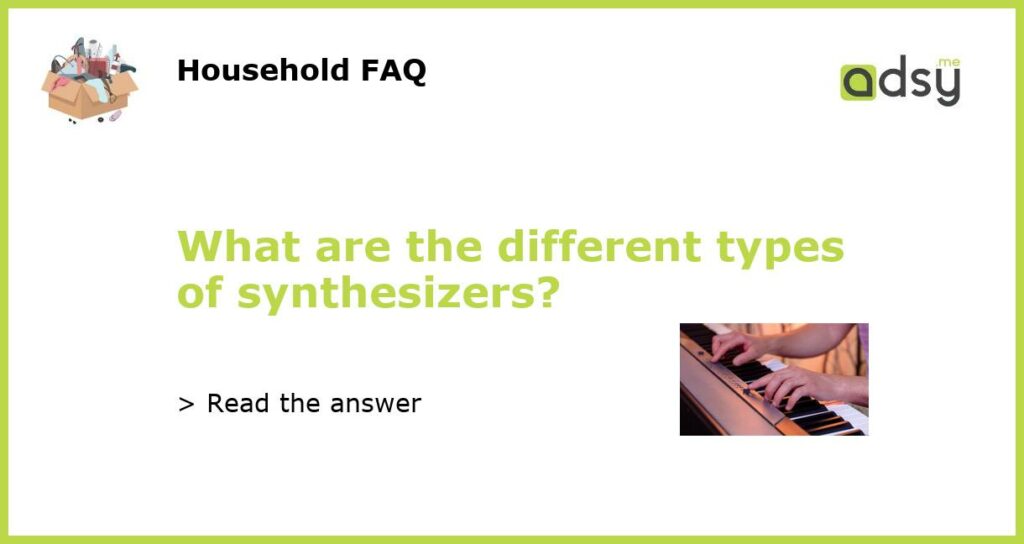The Basics of Synthesizers
Synthesizers have gained popularity among musicians for their ability to create a wide range of sounds. They are electronic instruments that generate various types of sounds using techniques such as subtractive synthesis, additive synthesis, frequency modulation synthesis, wavetable synthesis, and physical modeling synthesis. Each type of synthesis offers unique capabilities for creating different types of sounds. Synthesizers can be classified into various types based on the techniques used to create the sounds.
Analog Synthesizers
Analog synthesizers use analog circuits and signals to create sounds. They generate waveforms using oscillators and modify them using filters, amplifiers, and envelopes. Analog synthesizers are known for their warm, organic, and rich sound quality. Early analog synthesizers from the 70s and 80s are still popular among musicians for their unique character and vintage sound. Analog synthesizers are also known for their hands-on approach to sound design, as users can easily tweak the knobs and sliders to create different sounds.
Digital Synthesizers
Digital synthesizers use digital circuits and signals to generate and modify sounds. They are capable of emulating the sounds of analog synthesizers as well as creating new and unique sounds using advanced digital techniques. Digital synthesizers are known for their versatility, precision, and complexity. They offer a wide range of synthesis techniques such as wavetable synthesis, physical modeling synthesis, and granular synthesis, which enable users to create sounds that are not possible with analog synthesizers. Digital synthesizers are also known for their ability to store and recall presets, making them ideal for live performances and studio work.
Semi-Modular Synthesizers
Semi-modular synthesizers are a combination of analog and digital synthesizers. They offer the flexibility and creativity of modular synthesizers but with a pre-wired signal path. Semi-modular synthesizers are designed to be used as standalone instruments, but they can also be integrated with other modular synthesizers using patch cables. Semi-modular synthesizers are ideal for musicians who want the hands-on approach of analog synthesizers but with some digital capabilities.
Modular Synthesizers
Modular synthesizers are the most advanced type of synthesizer. They consist of individual modules that can be connected using patch cables to create a custom signal path. Modular synthesizers offer complete control over the sound design process and enable users to create sounds that are not possible with other types of synthesizers. Modular synthesizers are also known for their complexity, flexibility, and cost. They require a significant investment of time and money to learn and acquire the modules needed to create a complete system. However, for those who are willing to make the investment, modular synthesizers offer limitless creative possibilities.






